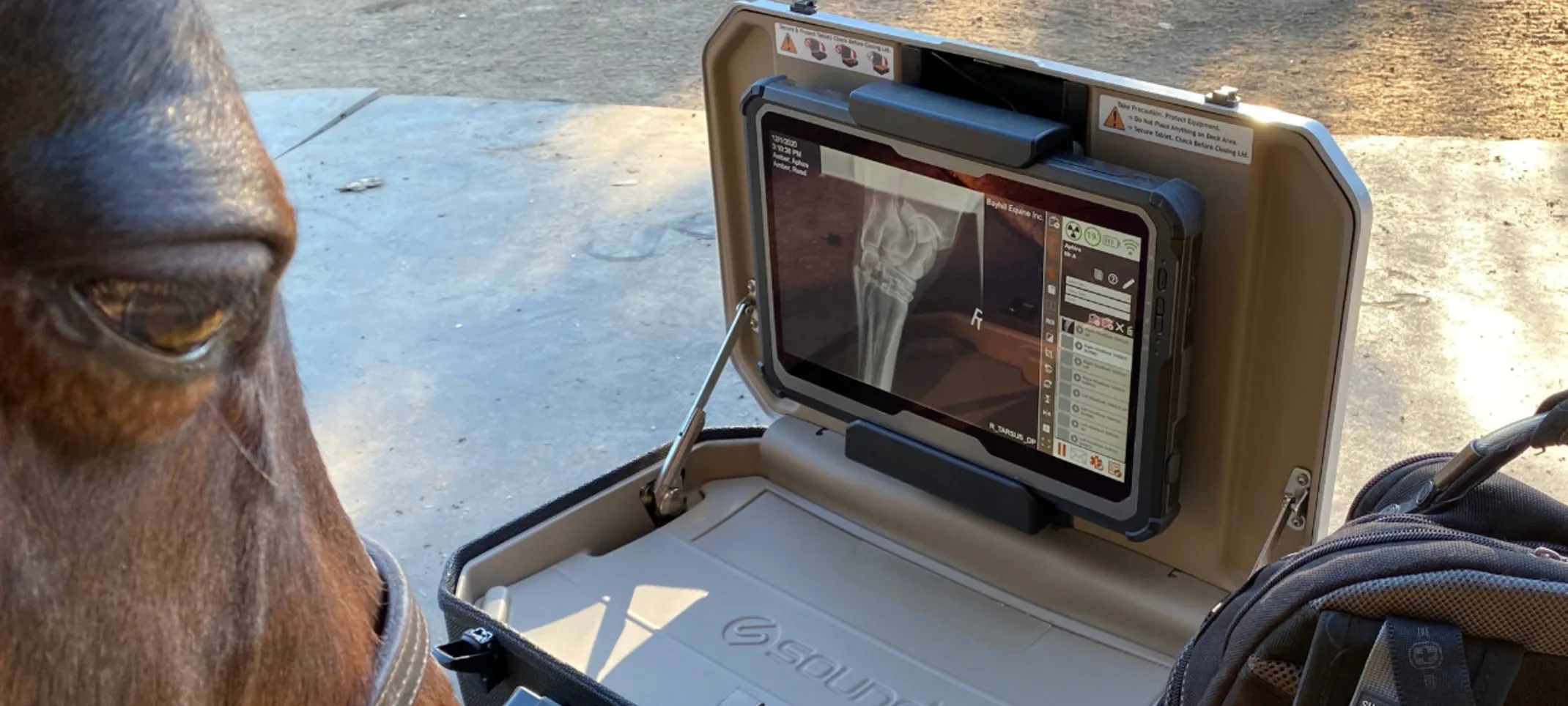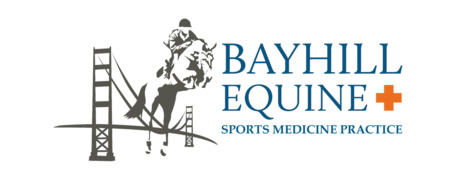Bayhill Equine
Digital Radiography

Horse owners may not always be aware of what types of testing and diagnostic procedures are recommended by veterinarians.
For this reason, it’s important to brush up on what all of these terms mean, preferably before your horse needs one or more of them. In this article, we’ll explain what digital radiography is and how it pertains to horses. With this information, you can better understand what your veterinarian is using to diagnose your horse’s medical conditions.
What is digital radiography?
Digital radiography may sound like digital radiology, but they’re a little bit different. Digital radiology refers to the interpretation of diagnostic images from X-rays, ultrasound, CT scans, etc.
Digital radiography, on the other hand, refers to X-ray equipment and the process of taking the X-ray images. Digital radiography is superior to its film X-ray predecessor. It captures images digitally rather than on X-ray film, which means the images can be viewed digitally on a computer screen rather than needing to be printed on X-ray film and read by holding them up to the light.
Digital images are available almost immediately after the X-ray scan is performed, and they provide a much clearer picture of the problem than the more traditional and old-fashioned film-style X-ray.
If your horse needs a radiograph, the veterinarian or technician will use flat plates made of either silicon or selenium to scan the horse’s body. If you have ever walked through airport security and had your bags scanned by an X-ray machine, this is the same type of procedure. In the case of medical care for horses, it is used to scan the horse’s bones and check for damage, disease, or other problems.
This type of scan works best when veterinarians suspect a problem in a specific part of the horse’s body. A digital radiography X-ray probably isn’t the best choice for scanning the horse’s whole body, but it can be an invaluable diagnostic tool when checking specific locations. It is best used on bones and is most commonly used on the horse’s legs, but it can be performed just about anywhere on the body. Horses can almost always remain standing during this procedure, with few exceptions.
How is digital radiography used for horses?
Digital radiography can be performed entirely on-site using a portable machine. Equine veterinarians and technicians may bring this machine along in situations where a problem is already suspected. The veterinarian and technician will need an outlet near the horse for the machine to plug into but can otherwise complete the process in the most comfortable location for the horse. The horse may or may not need to be lightly sedated, depending on the location of the problem and the overall behavior of the horse during the procedure.
The veterinarian will have the horse stand on blocks or move the horse’s limbs in a certain way depending on the location of the problem. The veterinarian will also take multiple pictures of the same area so a clear picture will be available when the process is completed. The veterinarian will place a flat plate behind the problem area while taking a picture of the horse’s body, so the horse must be able to stand still enough for the plate to remain in place as well as for the picture to come out clearly.
When the pictures have been taken, the veterinarian will look them over on-site and give an assessment. However, the pictures must also be examined at the vet’s office to ensure nothing was missed, so the diagnosis could change in some instances. On-site imaging is not as clear or visible as imaging at the veterinarian’s office on higher-quality screens.
Veterinarians usually use this type of diagnostic procedure to find fractures, joint health problems, arthritis, inner wounds, podiatry problems, and more. Most of the issues diagnosed by digital radiography are related to the bones, but this procedure may be used for some other problems as well, depending on the specific situation.
Do you feel like you’ve learned something useful about equine digital radiography?
This information can be helpful when you want to understand the recommendations your veterinarian is making for you and your horse. You can also always speak to your vet for more information about this type of procedure, and you can ask the technician who performs the X-rays if you prefer as well.
Digital radiography is just one of many ways equine veterinarians diagnose horses. With a focus on bone health, this tool is a very common one in the field of equine medicine.
